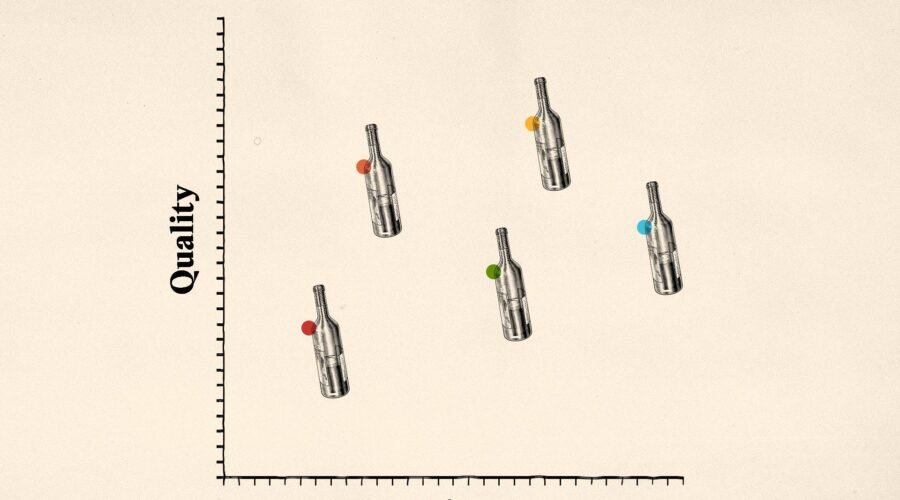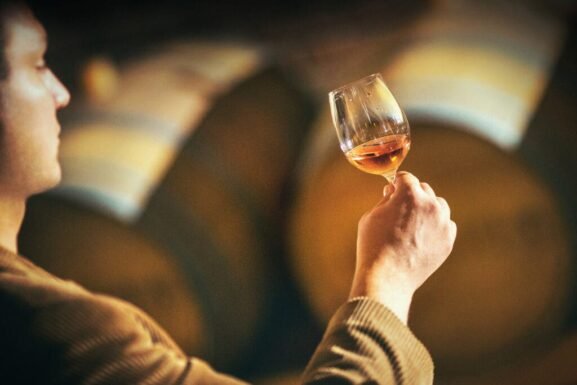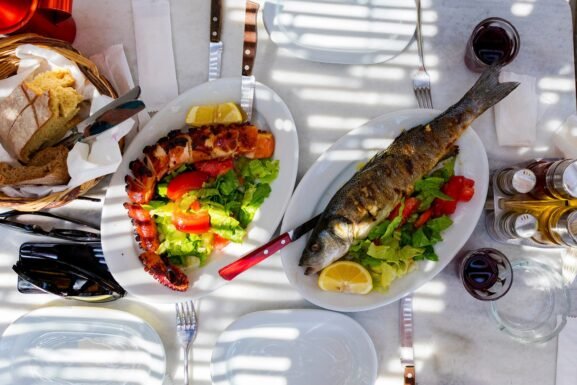Basics: What Is QPR? How It Helps Find Great Wine at Better Prices
Ever wonder why those premium, ultra popular Napa Cabs can be exponentially more expensive than an unknown, hidden gem from the same region? Or why is a Pinot Noir from a top producer in Burgundy quadruple the price of a similar style from Oregon? That would be Quality Price Ratio—better known as QPR.
QPR is the measure of a bottle’s quality relative to its price. The higher a wine’s QPR, the more quality you get for your money. Lower QPR wines might still be good quality, but they’re generally pricey. QPR is crucial to consider when buying wine, particularly for those on a budget.
How to Determine a Wine’s QPR
Location
To start, the “location, location, location” dynamic applies just as much to a wine region as it does million-dollar real estate. Translation: The region where the grapes are grown can have a significant impact on the wine’s price point and quality.
That’s why premium Cabernet Sauvignon wines from renowned regions such as Bordeaux or Napa Valley, for instance, usually carry a higher price tag then lesser-known Cabs from Sonoma or France’s Languedoc. While those Napa Cab and Bordeaux wines may very well be of higher quality, their higher cost per bottle can translate to lower value.
Grape Variety
Similarly, the grape varietal used to make wine can also impact its QPR. Certain grapes, such as Cabernet Sauvignon or Pinot Noir, can be notoriously expensive due to factors like high demand. However, others such as Merlot, Syrah, Grenache or Zinfandel—which provide similar aromas and flavors to Cabernet Sauvignon and Pinot Noir—may be less expensive due to lower demand.
If you want to see this QPR comparison in action, check out any steakhouse wine list and analyze the pricing on those Napa Cabs and Bordeaux selections versus a standout Châteauneuf du Pape, a Crozes Hermitage or a Sonoma Zinfandel. The QPR scale favors the latter options, meaning their prices might be lower despite high quality.
Winemaking
The winemaking process can also play a role in a wine’s QPR. Factors such as oak barrel aging, malolactic fermentation and extended skin contact can all add to a wine’s complexity. But oak barrels are not cheap, nor is the labor to execute fermentation, post fermentation and ageing treatments. So, while these techniques may help produce better-tasting wine, it is almost always going to lead to a lower QPR.
How to Find High-QPR Wine
Seek out bottles from lesser-known regions or grape varieties that offer excellent quality at a lower price point.
For instance, instead of reaching for that highly-rated Maremma Super Tuscan, perhaps try an under the-radar Vino Nobile di Montepulciano selection. Additionally, seeking out wines from smaller craft wineries can be an excellent way to find unique, high-quality wines without the brand recognition (and price tag) of larger producers. You just might find a compelling story behind that winemaking family in the process.
Why QPR Matters
Taking these various factors into account can help you find a quality bottle of wine without the big price tag.
But it’s important to remember: QPR is certainly subjective. One person’s assessment of quality may be widely different from another’s. However, there’s no question that evaluating a wine’s QPR can help you make more educated decisions about which wines to buy and enjoy. You might just find a new favorite weekday wine and save yourself a few bucks in the process.


